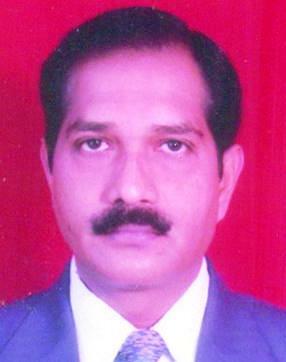
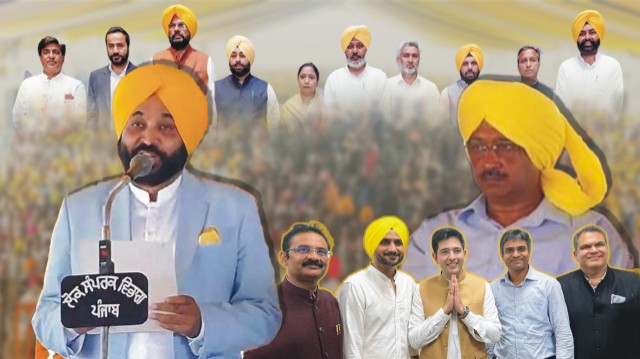
The Punjab verdict reminds me of my year 2015 face-to-face with Hilal Ahmed, Professor at the Delhi-based Centre for the Study of Developing Societies (CSDS). “If it maintains internal democracy, the AAP might emerge as a dominant player,” he said.
The Punjabis have voted AAP to power in a landslide win. The larger the victory, the higher the expectations. Because, unlike Delhi, Punjab is a full state, expectations are likely to be so high that even actual challenges may not be an excuse for not delivering on promises made during and after elections.
Without an iota of doubt, the victory in Punjab provides a timely platform for AAP to move the extra mile towards national polity, but the challenges are numerous and full of bumpy rides. The Delhi AAP model and strong governance in Punjab can help them towards their national political aspirations. Punjab elections sent a loud and obvious message. Political parties will need to adapt to the changing lexicon and idioms of politics and deliver good governance in order to remain politically relevant.
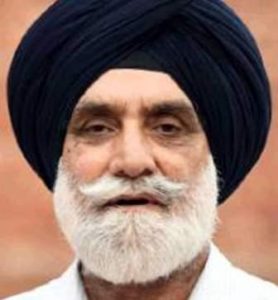
According to Ranjit Singh Ghuman, Professor of Economics, Professor of Eminence, Guru Nanak Dev University, Amritsar, “People of Punjab have created history by giving unprecedented victory to AAP ever since its reorganisation in 1966. It is mainly because of three things:
1. The people’s annoyance (which culminated into hate) with the Congress and SAD-BJP parties because of their failure at addressing the prolonged and basic issues of Punjab such as indefensibly high unemployment (even low quality of employment), drug menace, sacrilege, promotion of business at the cost of state exchequer and corruption and plundering of state’s financial resources.
2. The nudge for change along with marketing of Delhi model and populism became very handy for AAP’s hands-down victory.
3. The role of more than a yearlong farmers’ agitation against the threeagri-laws also contributed to AAP’s victory. Now the ball is in AAP’s court as by giving 92 MLAs the people have put a huge responsibility on AAP’s shoulders and hence have sky-high expectations.”
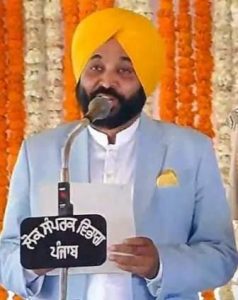
“This has been aptly acknowledged by Shri Bhagwant Mann in his brief address to the mammoth gathering after taking the oath on 16 March 2022. He promised to address the issues of unemployment, education, health and international migration of Punjabi youth. Nonetheless, in view of the empty coffers, huge debt burden and grossly under mobilisation of financial resources this would be an uphill task. But this is not impossible if there is strong political will to deliver what has been promised. The new government shall have to take hard and mature decisions to resurrect Punjab. Let us hope for the best,” added Professor Ranjit Singh.
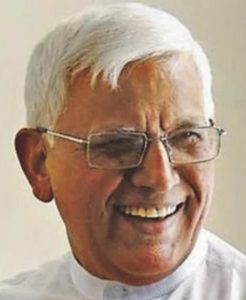
Mehmood Khan, IIM-Ahmedabad alumnus who was the candidate for JJP-AAP alliance for the Gurgaon parliamentary seat in 2019, said, “APP came into existence in the backdrop of India against corruption. I was the one who gave the name and the acronym AAP on 23rd September 2012. The name was coined to ensure that everyone would feel that it is his or her party. The first principle was that people will have to organisethemselves from booth level onwards. People can take initiative from one booth to Councillor and so on. It was then basic design of the party that wherever people feel frustrated or are faced with any kind of problem they can organise themselves and form the party on the ground. Above all, the basic principle was honesty and integrity.”
He added, “We have seen the performance of AAP in Delhi and Punjab. Further, the party will grow wherever people are frustrated or fed up with existing parties. The mandate is very big and therefore expectations would be very high. In Delhi, when the party took over, the original budget was 31,000 crore which has increased to 60,000 crores. Punjab can follow the governance of Delhi. It is important to note that Anil Ambani who was running electricity company has left Delhi because there is no scope for them. Delhi has now the cheapest electricity in the entire country and despite that it is in surplus. One can see the development in many areas including education and hospitals.
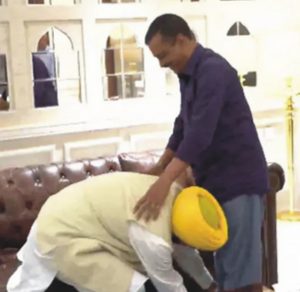
The bottom-line is if you bring honesty in the governance then everybody will benefit from it. India today is basically facing corruption in governance and APP has tried to establish honesty in governance in the last seven years which Punjab can follow. Today Punjab is facing serious trouble because there is over 3 lakh crore debt burden and the system is totally drained. I have worked in Punjab in 1980s and used to decide the cotton price of the world. Earlier, Punjab used to be number one state in the country but now it has slipped to 13th place and it was simply because there was mess in the governance. The culture of entrepreneurship should be strengthened. The idea of IT Pind as suggested by Manish Sisodia, Deputy Chief Minister of Delhi is a great idea.”
Mohammad Ghazali, a broadcast journalist with NDTV based in Chandigarh, said, “In Punjab people generally seek political change, and not just this time, as the APP claims. When the government changed in 2017, it was the Akali Dal, which had ruled from 2007 to 2017. In 2017 also there was a narrative for change. When there is a narrative for change, generally one party gains a majority, which is why Amrinder Singh received 77 seats. If this election is considered to be based on a narrative of change, the narrative of change in 2017 was also there.”

Ghazali added, “In 2022, the narrative for change was on the extreme because people were fed up with both existing parties. The very vacuum created as a result of it was captured by AAP. Also the Kisan movement worked in favour of AAP. AAP had no baggage, like other parties, of non-performance, bad governance, corruption and so on. The anger of the people was directed against the MLAs and they were put to task with tough questions. Since AAP had no such baggage, the very anger of other parties turned into support for AAP. People wanted to give AAP a chance this time. Now with landslide victory which will definitely raise the expectation level, AAP has to ensure that the very support to them does not turn into anger again which is a challenging task.”
On what worked for AAP, Ghazali said, “APP had in its kitty to show Delhi model. Akalis were thrown out in 2017 so it was obvious that they may not have any model. The party in power was doing nothing and fighting all the time and also had nothing to show. As AAP was first timer and had no political baggage with them, it worked for them. AAP at the very initial stage announced political freebies and it caught the imagination of the people.”
“At a time when per capita income of the people in Punjab has decreased drastically in the last decade, there is unemployment and alarge numberof people are dependent on agriculture and agricultural income is generally fixed. At a time when they had no source to increase their income then AAP came in and said it would decrease their expenditure and that struck the middle class. Farmers were getting electricity relief earlier,” said Ghazali.
“The traditional leaders and parties had become redundant. The ruling party failed to perform and therefore had nothing to offer. The change of guard in the Congress was similar to preparing for exams just a day before and that too kept on fighting instead of studying. The voting behaviour has changed from what used to be 10-15 years ago. Schemes for entire state may not suffice because individual voters aspiration has become important now. Reduced electricity bill can be beneficial for every individual and all these factors helped the AAP to win in Punjab. Also in Delhi, a large number of Punjabis are here and that is why it was easier for AAP to connect the governance and work done by APP in Delhi with the people of Punjab,” Ghazali opined.
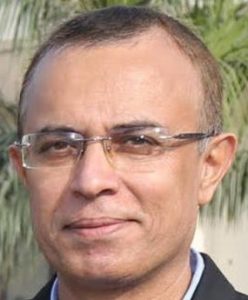
Praveen Rai, a Political Analyst at the Centre for the Study of Developing Societies, Delhi, while sharing a different perspective on the performance of AAP and the challenges ahead, said, “The astronomical mandate received by AAP in the recent state election in Punjab has been termed by the party as a revolution that will spread all over India. However, the election outcomes in five states bely the party’s tall claims of changing the political system as it failed to make an impact in Goa and drew a blank in UP and Uttarakhand.
“The mandate for the party with the broom symbol is mainly due to two primary reasons. One, strong anti-incumbency sentiments routed the Congress and the electorate did not trust the existing political parties, including the new farmers party. As a result it created a domino effect in favour of AAP and a landslide electoral endorsement. Two, the overwhelming popularity of Bhagwant Singh Mann created a super wave for the Delhi based party that transcended its model of government and Kejriwal’s guarantees.”
Rai added, “As per CSDS-Lokniti Post Poll Survey data, 81 percent of voters in Punjab preferred him as CM. The big victory indeed provides the party with the traction to spread its political wings in the country but it needs to carefully tread in Punjab as it is fraught with inherent dangers. The AAP seems to have chewed more than it can digest as the tectonic rise of Mann and consolidation of power in his hands can lead to power tussle with the centralised high command in Delhi. If such a situation arises, AAP may either witness a purge of the existing founders as it happened earlier with members who midwifed the party or the Punjab unit may split with bag and baggage and form a separate political establishment.”
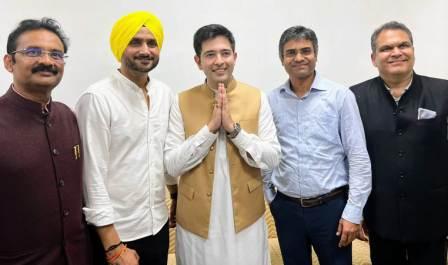 However, in a latest development former cricketer Harbhajan Singh, IIT-Delhi associate professor Sandeep Pathak, senior party leader and Delhi MLA Raghav Chadha, Lovely Professional University Chancellor Ashok Mittal, and Ludhiana-based industrialist Sanjeev Arora have been nominated by the AAM Aadmi Party for the Rajya Sabha. There is mixed feeling on the representation of people from Punjab for the Rajya Sabha. Congress leader Navjot Sidhu, in a tweet has said, “New batteries for the Delhi remote control , it’s blinking ….. Harbhajan is an exception , the rest are batteries and betrayal of Punjab!”
However, in a latest development former cricketer Harbhajan Singh, IIT-Delhi associate professor Sandeep Pathak, senior party leader and Delhi MLA Raghav Chadha, Lovely Professional University Chancellor Ashok Mittal, and Ludhiana-based industrialist Sanjeev Arora have been nominated by the AAM Aadmi Party for the Rajya Sabha. There is mixed feeling on the representation of people from Punjab for the Rajya Sabha. Congress leader Navjot Sidhu, in a tweet has said, “New batteries for the Delhi remote control , it’s blinking ….. Harbhajan is an exception , the rest are batteries and betrayal of Punjab!” ![]()
_____________
Also Read:
Centre’s Opaque Auction Rules For Pulses Rip Off Govt Coffers, Help Millers Strike Rich
Need to amend laws like UAPA to provide for punishment for those who slap false cases
Global Arms Trade: Who are the real winners?
Why not 40 pc tickets for women in Punjab and elsewhere?
Punjab – How a deadly cocktail of Agri-Water-Energy nexus going to destroy it?
North Pole and the ideological conflict of RSS & Hindutva
Politics of Symbolism: Dalit Chief Ministers in India

Disclaimer : PunjabTodayTV.com and other platforms of the Punjab Today group strive to include views and opinions from across the entire spectrum, but by no means do we agree with everything we publish. Our efforts and editorial choices consistently underscore our authors’ right to the freedom of speech. However, it should be clear to all readers that individual authors are responsible for the information, ideas or opinions in their articles, and very often, these do not reflect the views of PunjabTodayTV.com or other platforms of the group. Punjab Today does not assume any responsibility or liability for the views of authors whose work appears here.
Punjab Today believes in serious, engaging, narrative journalism at a time when mainstream media houses seem to have given up on long-form writing and news television has blurred or altogether erased the lines between news and slapstick entertainment. We at Punjab Today believe that readers such as yourself appreciate cerebral journalism, and would like you to hold us against the best international industry standards. Brickbats are welcome even more than bouquets, though an occasional pat on the back is always encouraging. Good journalism can be a lifeline in these uncertain times worldwide. You can support us in myriad ways. To begin with, by spreading word about us and forwarding this reportage. Stay engaged.
— Team PT


Copyright © Punjab Today TV : All right Reserve 2016 - 2024 |